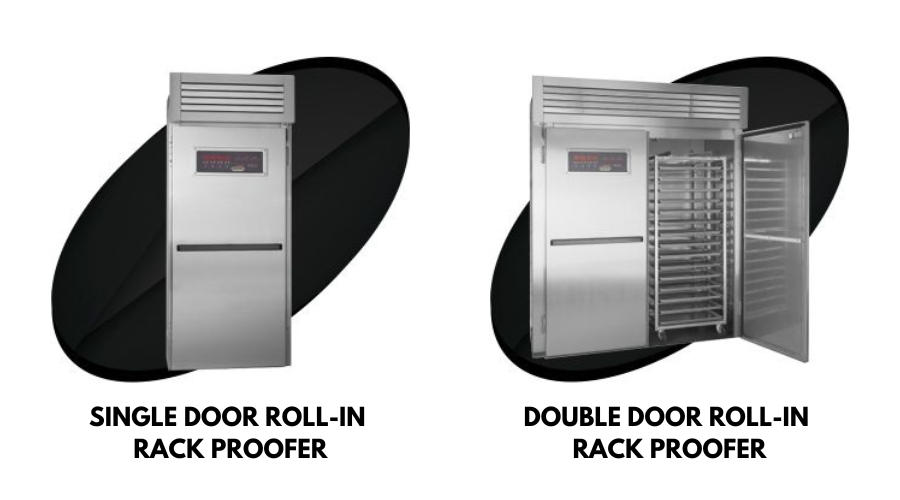The Dough Dilemma: Dough Proofer vs. Floor Proofing
Bread baking is a labor of love and a craft that requires many processes. Each process needs to be executed with perfection in order for your final product to turn out right. Among the many processes of bread-making, is the dough-proofing process. Dough proofing is crucial for achieving that perfect rise and gluten development needed to bake bread with the proper texture and flavor. There are a few different ways to proof bread dough. However, two of the methods are often compared and debated. Those two methods are using a Dough Proofer and floor-proofing dough. Though both methods will allow you to achieve the proper yeast fermentation needed to bake great bread, they differ significantly in technique and results. Let's dive into the distinctions between these two approaches and decide which is the most effective way to proof bread dough.
Dough Proofer: Precision and Control
A dough proofer, also known as a proofing box or proofing cabinet, is a piece of equipment designed to easily create the most optimal environment for dough proofing. A Dough Proofer ensures maximum control over the proofing environment and produces optimal conditions for yeast activity, leading to predictable and uniform dough rising. Many ask the question, how does a dough proofer work? Here are some key advantages of using a dough proofer:
- Temperature Control: A dough proofer allows precise temperature settings. Precise temperature ensures consistent proofing results without having to worry about fluctuations in room temperature. Proofers are typically capable of ranging from 70°F to 120°F. This consistency helps the yeast to ferment at an optimal rate, avoiding over-proofing or under-proofing. Bakeries will often utilize a proofer retarder for the ability to provide both heat and humidity with the additional ability to cool down the temperature and slow the fermentation process.
- Humidity Regulation: Maintaining the right humidity level is essential for preventing the dough's surface from drying out. Dough proofers utilize a built-in humidity control system that keeps the dough moist and pliable. Most proofers can range from 50% to 99% humidity. This range of humidity allows bakers to set a range of humidities depending on the specific product. Without a proofer, accurate humidity is almost impossible.
- Consistency: With temperature and humidity control, bakers can achieve accurate and consistent proofing results that are not possible any other way. This reliability is extremely valuable when baking at a retail and wholesale level. Customers of a bakery rely on the consistency and quality of the products they enjoy and this is what keeps them coming back for more.
- Time Efficiency: Having such a controlled proofing environment will actually cut down on the time needed to properly proof dough. When floor proofing, sometimes it may take extra time just to the environment right. A controlled environment can speed up the proofing process, making it more time-efficient.
Floor Proofing: Traditional and Hands-On
Floor proofing, on the other hand, is a more traditional method where the dough is left to rise at room temperature, often on a countertop or on proofing racks with rack covers to ensure better humidity. While this method has some benefits, it overall lacks the precision of a dough proofer.
- Simplicity: Floor proofing requires no special equipment, making it accessible to anyone with a kitchen. This method relies on ambient conditions, which can fluctuate and cause the dough to take longer to proof, or not proof consistently.
- Flavor Development: There is a benefit to a slower proofing process. This slow rise can enhance the flavor and texture of the final product, as it gives the yeast more time to develop complex flavors. However, a slow proofing process is not the most efficient way to proof in a retail and wholesale bakery environment when time is money and demands need to be met.
- Flexibility: Without the constraints of a proofer, bakers can experiment with different proofing times and temperatures. This flexibility can lead to unique and personalized bread characteristics.
- Artisanal Appeal: Many artisanal bakers prefer floor-proofing for its traditional appeal. Some bakers are more comfortable with the traditional techniques of bread baking. These same bakers will hand mix and knead their dough as well. Although a very rewarding process to make and proof bread, for bakeries it is just simply not an efficient way to produce product.
Dough Proofers and floor-proofing methods have their unique advantages and can both produce high-quality bread. Understanding the differences and benefits of each will help you choose the right approach for your needs. If efficiency and consistency are not of major importance to you and would prefer to have a longer and more hands-on proofing process, then floor-proofing your dough will be more than sufficient. However, if you are a bakery or wholesale facility where time and consistency are of the utmost importance, then a dough proofer is an absolute game changer.


